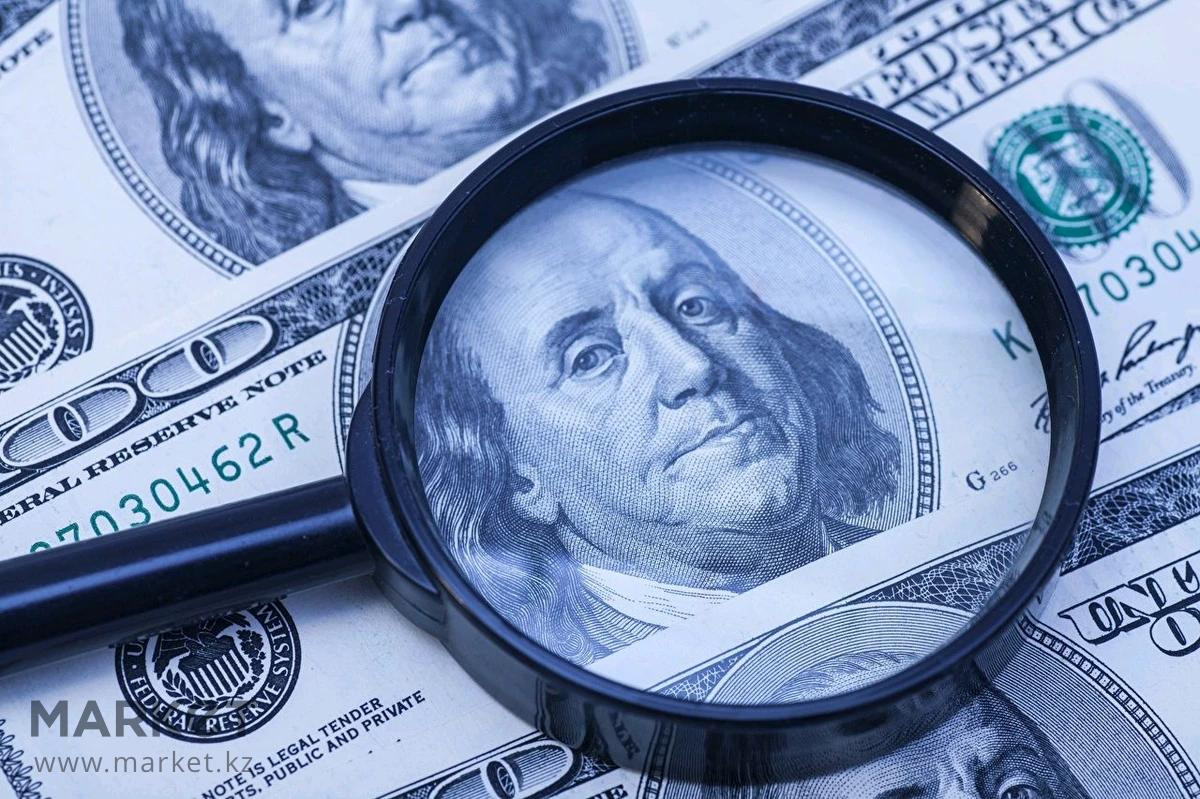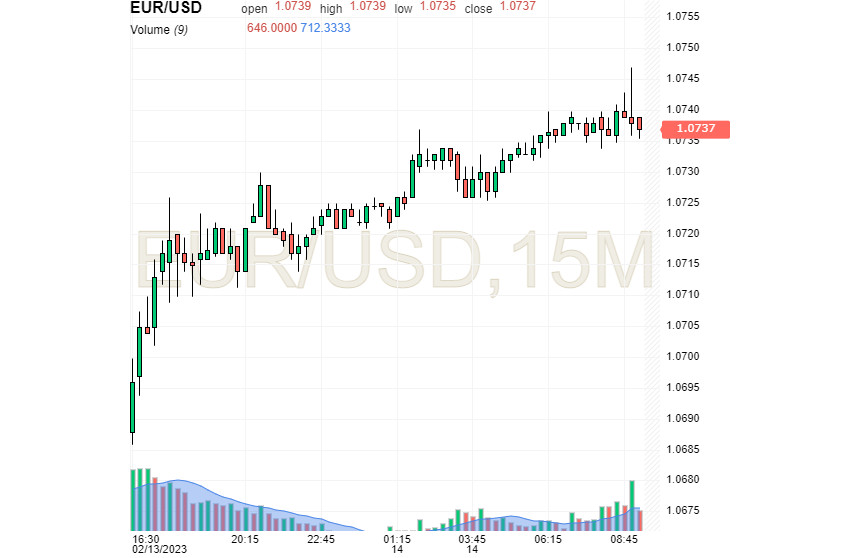
The U.S. currency is on the brink of falling, showing weakness ahead of the release of the U.S. inflation report. The greenback's attempts to chase the euro in the EUR/USD pair leave much to be desired, as the greenback acts with varying success. At the same time, the euro is not always able to hold steady, analysts say.
The greenback started the new week on a good note, strengthening against most of the key currencies, but eventually it failed to hold its ground. The greenback lost to the single currency, which was also balancing near the price bottom. The EUR/USD traded around the low of 1.0655 before the release of the US macro data, but then it recovered and tested 1.0679. On Tuesday, February 14, the U.S. currency fell off the pedestal. The euro used this opportunity to strengthen its positions. On Tuesday morning, February 14, the EUR/USD was trading at 1.0737, navigating in a whirlpool of prices.

The market is focused on the annual U.S. inflation rate for January, which can significantly influence the Federal Reserve's actions. According to preliminary forecasts, this indicator will fall to 6.2% from the previous 6.5%. Analysts speculate that annual inflation in the U.S. may ease for the seventh time in a row and be the lowest since the second half of 2021.
Recall that in 2022 the U.S. central bank significantly increased interest rates amid high inflation, which broke records for the past 40 years. This gave a respite to the U.S. economy, experts believe. The Fed's actions contributed to a gradual slowdown in price growth. Against this background, the central bank slightly eased the rate hike. Take note that at the beginning of February 2023, it was raised by 25 bps, up to 4.5-4,75%. Meanwhile, most analysts (86.3%) expect another rate hike in March (by 25 bps to 4.75-5%).
According to MUFG Bank economists, the seasonality factor affects further growth of the greenback. However, this year the trends favorable to a stronger USD have not yet emerged. The last month of winter and the second half of January are among the best periods for the dollar's growth, according to the bank. However, now the situation is not in favor of the greenback, and analysts are alarmed.
The macro data on US consumer inflation, released on Monday evening, February 13, added more fuel to the fire. New York Fed one-year consumer inflation expectations remain unchanged at 5.0%, while the three-year-ahead gauge eases to 2.7% from 2.9%. For its part, the five-year outlook ticks up modestly to 2.5% from 2.4%. Median expected growth in household income declined 1.3 percentage point to 3.3% in the January survey, the largest monthly drop in data.
Currency strategists at Commerzbank are confident that the best times for the USD are ahead, so they urge market participants not to worry about not too strong macro data from the U.S. "If it comes in below market expectations, I would expect a short dip in the dollar but I would be cautious about expecting this to continue all week. USD weakness caused by easing inflation will be short-lived ," Commerzbank believes. Significant USD weakness may provoke only "pronounced economic slowdown caused by the past rate hikes," the bank said. In such a situation, hopes for a soft landing of the American economy are unlikely to come true. Negative trends will put pressure on the dollar, but in the nearest future it is probable that the negative trend will be reversed.
As for the euro, a week earlier it was periodically declining, yielding to the U.S.. Nevertheless, the single currency is actively fighting for the price pedestal. According to analysts, the euro is now overvalued, which leads to its further decline. EUR was negatively affected by the recent quarterly report of the European Commission on the forecasts of economic growth in the region. Despite the revision of the key figures upward (to 0.9% in 2023), the euro doesn't have the impetus for growth. In addition, the forecast for inflation in the euro area has been improved. Price pressures in the EU are expected to be 5.6% this year and 2.5% in 2024. This gives hope for a further recovery of the euro, experts conclude.
 English
English 
 Русский
Русский Bahasa Indonesia
Bahasa Indonesia Bahasa Malay
Bahasa Malay ไทย
ไทย Español
Español Deutsch
Deutsch Български
Български Français
Français Tiếng Việt
Tiếng Việt 中文
中文 বাংলা
বাংলা हिन्दी
हिन्दी Čeština
Čeština Українська
Українська Română
Română

